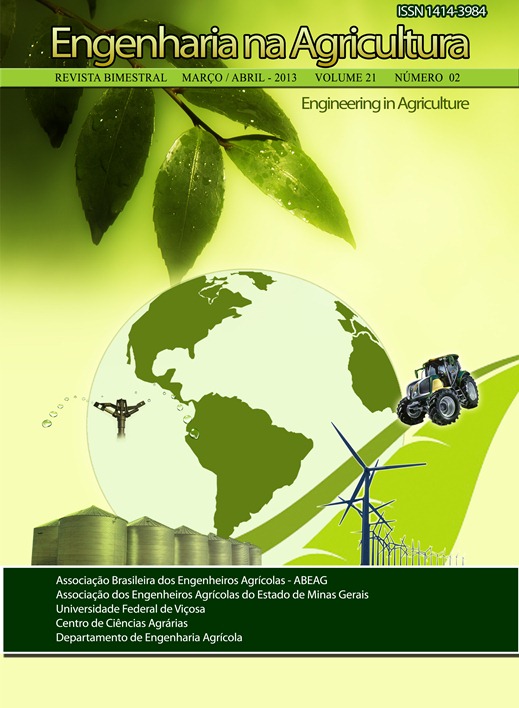METHODS FOR ESTIMATING REFERENCE EVAPOTRANSPIRATION FOR CHAPADÃO DO SUL - MS
DOI:
https://doi.org/10.13083/reveng.v21i2.346Keywords:
agrometeorologia, ETo, evaporação, irrigação, Penman-Monteith-FAO56Abstract
One of the parameters of greatest uncertainty related to water and irrigation management is evapotranspiration. Before selecting the determined method to estimate the reference evapotranspiraton (ETo) in a region, it is extremely important to evaluate the degree of precision of the model. The objective of the present study was to evaluate the performance of 30 methods to estimate the ETo for Chapadão do Sul, Brazil. Meteorological data was obtained from the National Institute of Meteorology during a four year period (2008 to 2011). The standard method was Penman-Monteith-FAO56 and comparison of the results was performed by means of the determination coefficient (r2), the coefficients “a” and “b” of the linear regressions, the estimated standard error (ESE), the Willmott concordance index (d), Pearson correlation coefficient (r) and confidence coefficient (c). The best methods for estimating ETo were obtained by the Penman, Stephens-Stewart, Radiation-Temperature, Turc, Hargreaves, Penman-FAO24, Thornthwaite, Abtew, Blaney-Criddle-FAO24, McCloud, Radiation, Garcia-Lopez, Modify-Thornthwaite, Global-Radiation, Hargreaves-Samani and Jensen-Haise methods. The McCloud method is recommended when only temperature data is used. The Hargreaves-Samani method can be used after calibrating its equation for the region of study. The Makkink, Priestley-Taylor, Camargo, Linacre, Hamon, Ivanov, Kharrufa, Blaney-Morin, McGuiness-Bordne, Romanenko, Lungeon, Hicks-Hess, Liquid-Radiation and Tanner-Pelton methods cannot be applied to estimate the ETo in Chapadão do Sul, Brazil.Downloads
Downloads
Published
How to Cite
Issue
Section
License
Authors who publish with this journal agree to the following terms:
The author(s) authorize(s) the publication of the text in the journal;
The author(s) ensure(s) that the contribution is original and unpublished and that it is not in the process of evaluation by another journal;
The journal is not responsible for the views, ideas and concepts presented in articles, and these are the sole responsibility of the author(s);
The publishers reserve the right to make textual adjustments and adapt texts to meet with publication standards.
From submission, the author is fully conceding the paper's patrimonial rights to the publication, but retaining the owner of its moral rights (authorship and paper's identification) according to Creative Commons Attribution-Noncommercial.








 Licensed by
Licensed by 